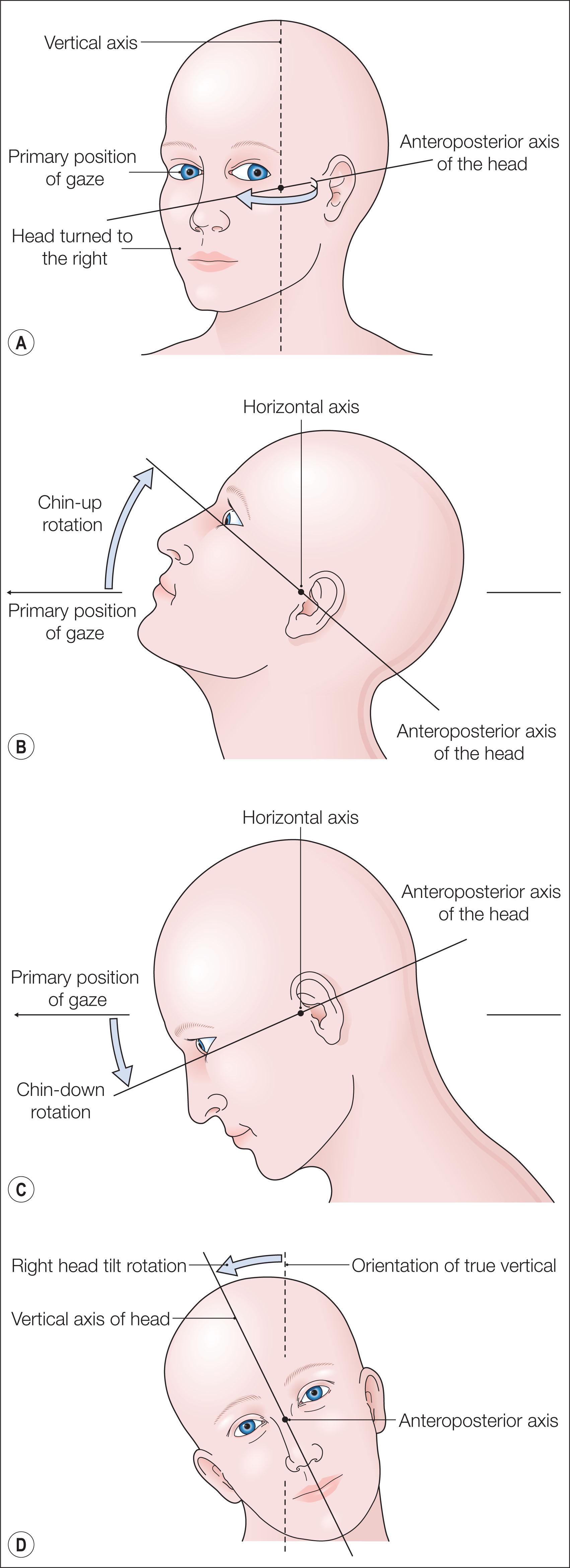Physical Address
304 North Cardinal St.
Dorchester Center, MA 02124
The medical term for an abnormal head posture (AHP) is “torticollis,” from the Latin tortus (twisted) and collum (neck). Torticollis from eye-related problems is termed “ocular torticollis.” The assessment of AHP in a child is often multidisciplinary, involving input from pediatricians, orthopedic surgeons, neurologists, psychologists, and occupational and physical therapists. It is common for an ophthalmologist to be consulted to rule out ocular causes for an AHP.
Torticollis can involve rotation of the head around any of the three main axes ( Fig. 102.1 ). These include:
vertical axis: head rotated to one side away from the primary (straight-ahead) gaze direction (“yaw”)
horizontal axis: chin elevated or depressed relative to the primary position (“pitch”)
anteroposterior axis: head tilted to one shoulder (“roll”)
combination of two or three orientations.

Congenital torticollis is most often due to muscular or skeletal anomalies. Ocular torticollis almost never presents within the first few weeks of life. Ocular torticollis that persists long term can lead secondarily to a musculoskeletal torticollis, scoliosis. The most common cause of abnormal head tilt is due to congenital superior oblique palsy. It may or may not result in facial asymmetry. Trauma must be ruled out as a cause of any acquired abnormal head posture, whether as a result of damage to the neck or due to disruption of eye muscle balance.
Congenital muscular torticollis
Postural torticollis
Absent cervical muscles
Become a Clinical Tree membership for Full access and enjoy Unlimited articles
If you are a member. Log in here